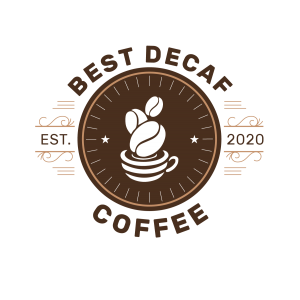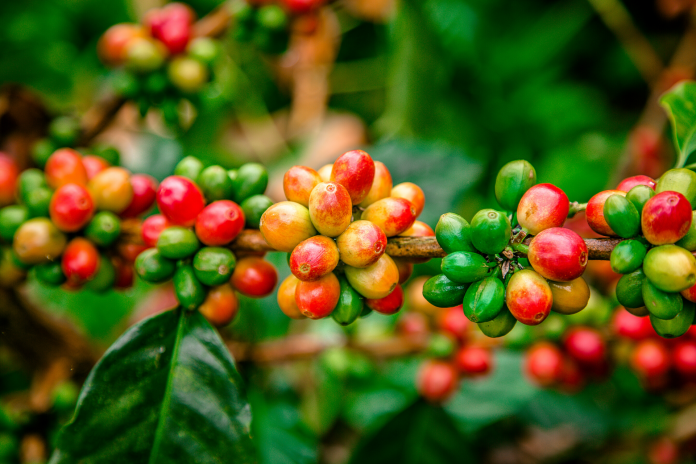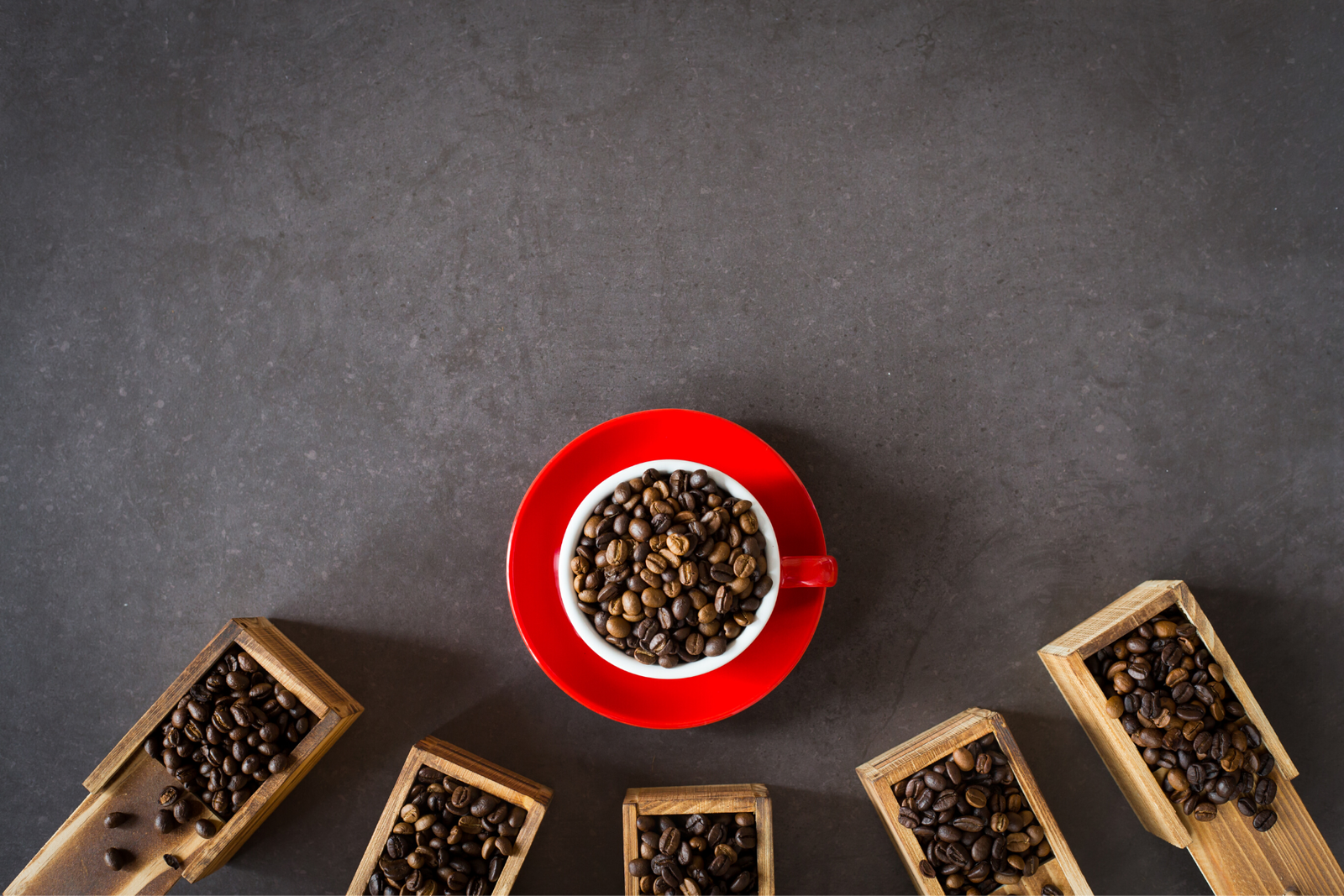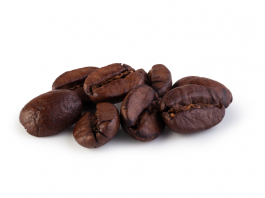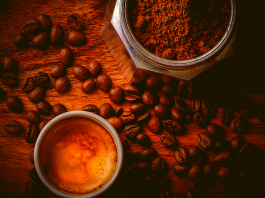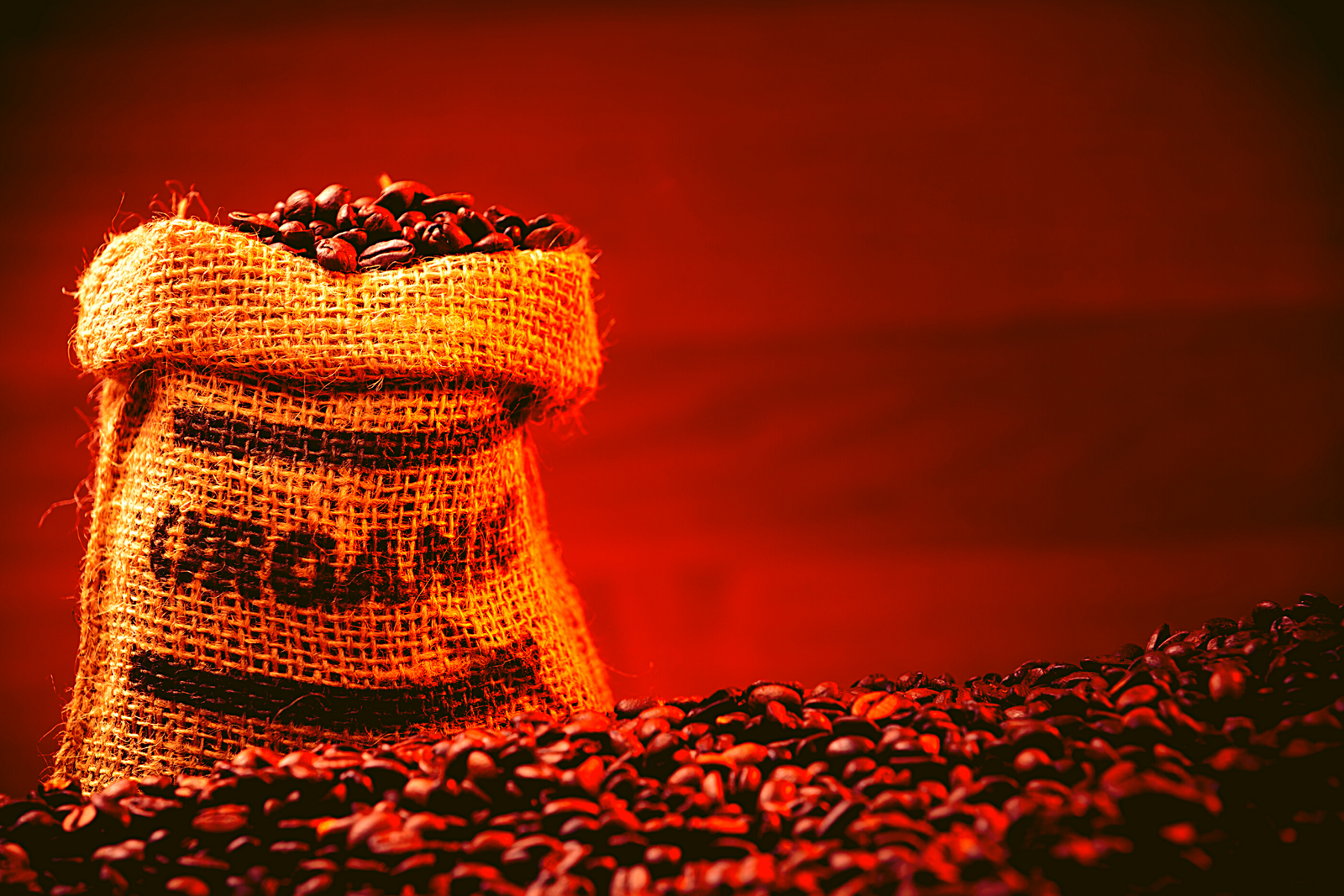Contents
- 1 Top 10 Best Colombian Coffee
- 2 A History of Coffee Cultivation in Colombia
- 3 The FNC and Juan Valdez
- 4 What Makes The Best Colombian Coffee Unique?
- 5 3) Coffee Processing
- 6 The Colombian Coffee Crisis
- 7 Positive Future Outlook
- 8 How To Choose The Best Colombian Coffee
- 9 7) Purchase Directly
- 10 Brewing a Colombian Coffee To Its Best
- 11 Frequently Asked Questions
- 12 Final Thoughts
Ahh…
The great Colombian coffee. It is a favorite for many a coffee connoisseur. But, if you first heard about it, why exactly are these coffee beans so highly recommended?
Well, stick around for a full break down on what’s the deal with the Colombian Coffee plus some of the best Colombian coffee available today that you can try!
Top 10 Best Colombian Coffee
A History of Coffee Cultivation in Colombia
We cannot go into the complete and full history of the coffee industry in Colombia, but we can highlight some of the key years that help put everything into context.
- 1723
Although coffee beans have made their way around the globe in the late 160ss, it is believed that they finally found their way to Colombia sometime around this year due to the Jesuit priests who took it with them.
- 1835
The first outbound shipment of coffee was in 1835 with a total of 2,500 pounds made its way to the US. Although it was a small drop in the bucket compared to the modern yearly exports which are well over 10 million bags.
- 1927
The Federación Nacional de Cafeteros de Colombia(Colombia Coffee Growers Federation, in English) was founded.
- 1930
The 19th century saw a huge change in Colombia’s economy. Colombia became the 2nd largest coffee producer in the world behind Brazil. Coffee was one of the main exports and is the driving force behind the Colombian economy.
- 1958
The Juan Valdez character was launched into the ads for the best Colombian coffee. He represents the Colombian farmers who grow their coffee beans. We will take a closer look at him in just a few moments.
- 1990
Things took a turn for the worst for the Colombian coffee industry in the 1990s. It was when more than 20 percent of Colombia’s producers were not making enough profit in order to cover the costs of production.
Thus, the production drastically dropped, and most smaller farmers have had to close their farms and have suffered from famine and poverty.
Although, this is something that Colombian farmers are still dealing with today. Fortunately, very recently steps have been taken to try to fix this.
But, because of the very manual nature of labor, the strict adherence to quality as well as the changing climate, Colombian coffee growers still have a tough road ahead of them.
- 1994
The FNC opened a coffee-themed park and named it the National Coffee Park.
- 2018
The best Colombian coffee prices are at a 12-year low with coffee producers calling on large brands such as Starbucks and Nestle to step up and help out.
They see a small handful of their coffee beans being sold in the form of fancy lattes for just $5. And with the price they are getting per pound is just too low.
In the summer of 2018, the Colombian Government committed 100 billion to help farmers deal with the low prices.
Read More:
- Best Lipton Iced Teas
- Best Decaf Coffee: All You Need to Know About Decaf Coffee
- 10 Best Low Acid Coffee Brands Review
- Ninja Hot and Cold Brewed System Review
- Best Brazilian Coffee
The FNC and Juan Valdez
The non-profit organization aims to represent the coffee farmers in Colombia and collectively give smaller farms the power against the massive entities that had a stranglehold on the Colombian coffee production, historically.
This organization supports farmer’s rights, research into the better-growing methods in order to increase yield and the awareness of 100 percent Colombia coffee as opposed to the blends that contain the coffee from other countries that are mixed in with Colombian coffee beans.
As mentioned before, FNC created the Juan Valdez character in 1959. It was an incredibly successful and long-running marketing campaign that no other coffee-growing nation has reached.
To make it short, it made Colombian coffee known in the world. Today, the FNC continues to strive not just for the generation of profit, but also towards creating a positive social impact.
Research projects, environmental protection, training, and community development all contribute positively to Colombia’s coffee grower.
What Makes The Best Colombian Coffee Unique?
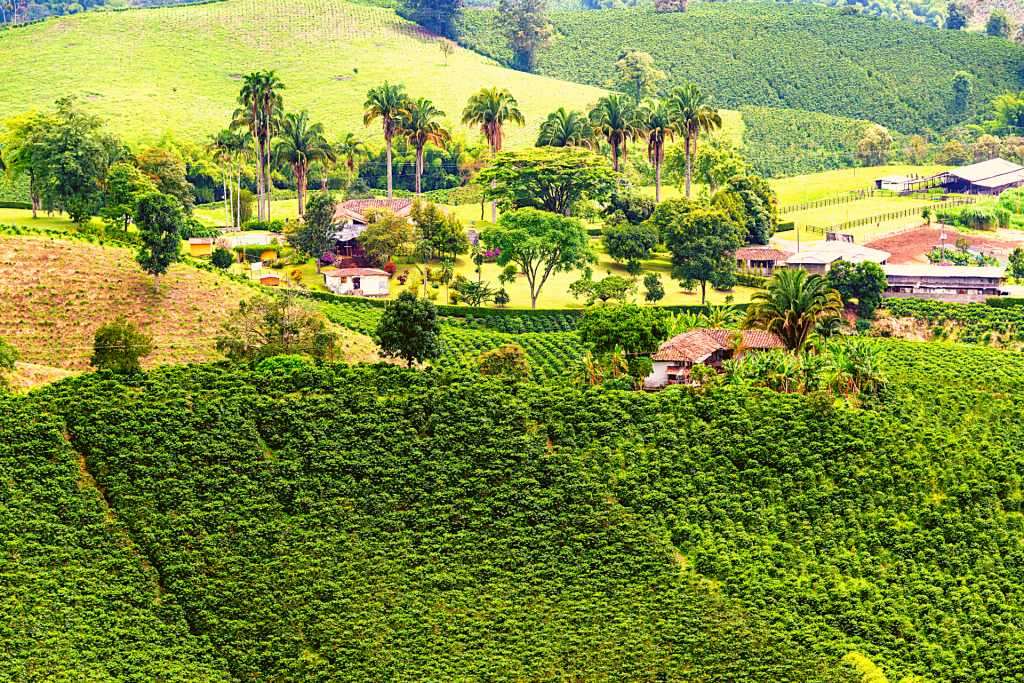
Okay, enough with the history.
Let’s talk about what makes these coffee beans special!
1) Family-Run Farms and Hand-Picked Beans
A lot of coffee beans that originate from Colombia are grown on small family-run farms. Most of the farms are much smaller than 12 acres and there are about half a million families working hard to bring you these tasty green beans.
It is not practical to pay that much attention to detail on the large-scale coffee farms. However, with Colombian small farms, workers will check the plants every 10 days or so during the harvesting season, picking the best cherries and leaving the rest to continue maturing until it is the perfect time to pick them.
If you take care of the coffee beans and pick them at the right time, then it guarantees you the best flavor. And the success of picking the right bean with the right color requires a lot of expertise and experience.
2) Unique Flavor Profile and Ideal Growing Conditions
It is not just the harvest method that defines the Colombian coffee beans. It is also the growing conditions on Andes’ steep slopes, offering high altitude and ample sun.
Colombia is not that big. So, how can they produce coffee with so much variation?
In general, there’s a good bit of regional variation of the best Colombian coffee. But there are a few identifiable features which seem to stretch across them.
First off, the best Colombian coffees tend to be well-balanced and mild. The flavor profile usually includes fruity notes that range from red berry and apple to tropical. In addition, chocolate, floral, caramel, and sugar cane notes are common.
In terms of aroma, you can expect fruits, citrus, and some hints of spices. In addition, the brews tend to have medium-bodied with bright acidity.
However, these baselines can shift depending on the region. There are over 22 coffee growing region in Colombian, which is separated into four main zones.
- Central
First off is the Central zone of Columbia that has several of the renowned and well-known subregions of Colombian coffee production. The coffee from this zone tends to be fruity and herbal with high acidity.
You might see the acronym MAM when shopping for the best Colombian coffee. It stands for Medellin, Armenia, and Manizales regions which are located in the Central zone. They are known for producing top-quality coffee beans.
The Colombian Triangle is also found in the Central Zone. If you have been exploring the world of the Colombian coffee, then you might have come across the terms Coffee Belt or Coffee Triangle.
This is a particular region that produces the majority of coffee beans coming from Colombia. It’s made up of Risaralda, Caldas, and Quindío, which have pretty significant coffee outputs.
In addition, Tolima and Antioquia are two very large coffee-producing regions that are also located in the central zone.
The central zone features 2 harvest seasons, due to having 2 distinct sets of dry and wet seasons.
- Northern
The coffee beans from the northern region of Colombia tend to have more traces of nut and chocolate flavor with more body and less acidity than other Colombian coffees.
AS far as the growing environment goes, the Northern region has only one wet and one dry season. These are from April – November, and December – March every year.
As the wet season approaches, the coffee plant bloom and is eventually harvested at the end of the same season which is around nearly November.
The growing conditions here vary depending on the subregion. Some are somewhat similar to Central America while others are more exposed to the sun radiation which causes farmers to utilize shade.
- Southern
Going South, you will find coffee beans with stronger hints of citrus and acidity. Also, the area lies closer to the equator with higher altitudes, so they are often associated with better-quality coffee.
Similarly, some people describe the grouping of Huila, Cauca, and Nariño as the “New Colombian Coffee Triangle”, which is the area known for producing specialty coffee with caramel and fruity notes more prominent aromas.
In addition, the average farm size here is much smaller than in other areas. Like the Northern, the Southern zone also has only one dry and one wet season.
However, the harvest is in the Summer and Spring instead of Fall. This is part of the reason why the best Colombian coffee is available year-round.
- Eastern
Lastly, the eastern zone is the smallest including only Casanare, Arauca, Caquetá, and Meta. They are the high priority place, helping farmers growing their farm size and focusing on the coffee varieties that are better suited to that area.
The region has a similar climate to the Northern region, only with higher humidity levels due to more rainfall.
3) Coffee Processing
In Colombia, most coffee farmers will process their coffee at their own facilities. The Colombian Arabica coffee beans are usually wet-processed. It is where water is used in order to separate the pulp from the cherries.
This washed processing works well in most climates and helps reduce labor and provide overall monitoring than most processes. It gives the best Colombian coffee with a brighter, cleaner, and more fruity profile. Read Here: Best Pour Over Coffee Makers
Still, there are some Colombian coffee producers that opt to utilize the natural methods combined with the honey in order to process their coffee beans. The alternative process offers more body and sweetness because of the fermentation of the fruit left on the coffee beans during drying.
The Colombian Coffee Crisis
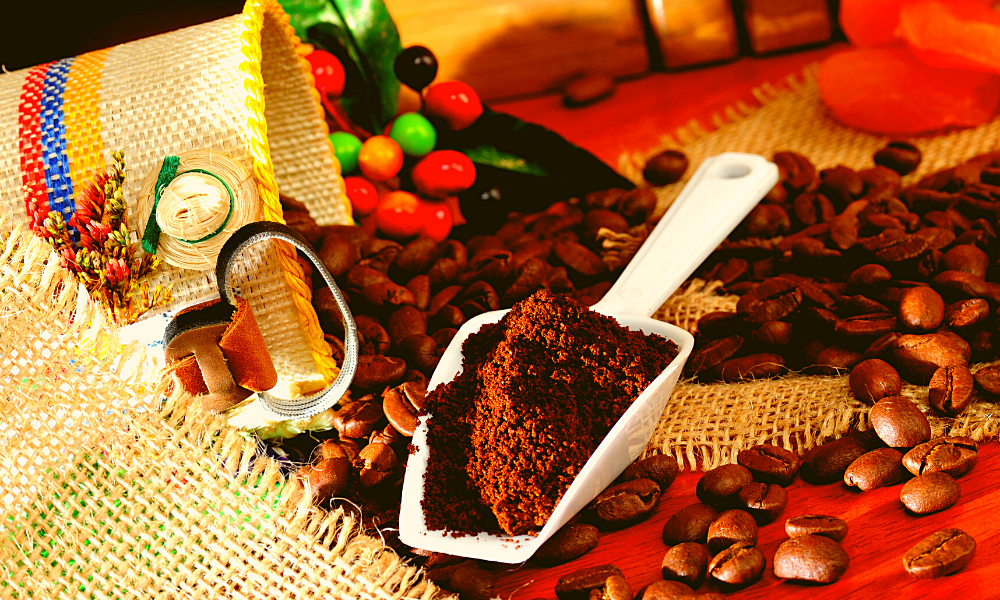
There are a couple of things that have affected and continued to hurt the Colombian Coffee industry that leads to the current Colombian coffee crisis. Some have been going on since the 1990s, as mentioned before.
- Production Cost Vs. Market Prices
First off, the global market price for the coffee beans is almost entirely detached from the production prices of Colombia. Instead, it’s set in New York and is largely dictated by the US monetary policy as well as giant Vietnam and Brazilian markets.
The results are small wages for the Colombian farmers as they try to compete with the other coffee industry giants while maintaining quality control. Meanwhile, most roasters, particularly the distributors, profit from their products more than the coffee farmers themselves.
- Pests
In recent years, numerous Colombian coffee farms have battled against pests that have been devastating to their crops.
In 2018, the coffee borer beetle and 2 destructive fungi threatened about 500,000 family-run farms. Previously, coffee leaf rust has caused a 31 percent drop in coffee production in just a few years.
- Climate Change
Finally, like other regions around the globe, climate change has become a huge concern for the Colombian coffee farmers. The change in rainfall and temperature caused a significant impact on crop growth and the yield.
Positive Future Outlook
Sources differ on whether the outlook on the Colombian coffee crisis issue is worsening or improving. However, it’s clear that it moves towards sustainable practices such as Direct or Fair trade to help enhance the livelihood of the Colombian farmers.
With almost 4 million individuals relying on the coffee industry, sustainability is crucial. Although most can’t get certifications because
of the costs, about 42 percent of Colombian coffee farms have sustainable practices.
Also, the FNC has pledged to achieve sustainability across the coffee industry of Colombia by 2027. If achieved, this could significantly improve the outlook for the coffee industry here.
How To Choose The Best Colombian Coffee
Regardless of your personal preferences for flavors, tastes, or roasts, there is a Colombian coffee brew for you.
However, there are a couple of steps you need to take in order to ensure that no matter what Colombian coffee variety you like, you will always have the best and freshest tasting available.
1) The Juan Valdez Image
Back in 1927, the FNC was formed as a way to promote the production of the authentic and best Colombian coffee.
The group devised a simple and quick way to tell if a product contains the authentic Colombian beans by employing the image of someone you are probably already familiar with.
The products containing 100 percent authentic and best Colombian beans are allowed to put the famous imagery of Juan Valdez on their product packaging. It serves as a guarantee that the bag of beans you get is free of inferior blends or fillers and is 100 percent genuine.
2) The Ingredient List
The best Colombian coffee has nothing to hide. Read through the ingredient list on the package and see if it says 100 percent Colombian coffee. If not, then it is probably containing a blend of other products and does not warrant your consideration.
3) Supremo Vs. Excelso
If you are researching for the best Colombian coffee, then you are bound to come across the terms Excelso and Supremo. Take note that these terms are used to grade and describe exportable coffee beans from Colombia.
Both Excelso and Supremo coffee beans are high quality and it is actually possible for both coffee beans to come from the same tree.
What’s the difference, then?
Supremo is the largest-graded bean with the Excelso slightly smaller. In general, size matters in the coffee bean industry. Thus, a Supremo grade technically means the highest quality coffee bean.
However, coffee drinking really boils down to your personal preference, so you cannot always judge a coffee bean by, in this case, its size.
4) Roast Date
To experience the richest flavor, your coffee beans should be brewed anywhere from a few days to at least 3 weeks from the roasting date. Anything more than that and you won’t be able to enjoy high-quality coffee.
The reputable roasters will publish the roasting date on their package. However, you might need to ask for it, especially when you are shopping online, and inspecting the physical package is not possible.
If the roaster refuses to tell you or cannot tell you when the coffee beans were roasted, then don’t buy it.
5) Roast Type
Speaking of roasts, one of the wonderful things about the Colombian coffee beans is their ability to take well to various roasts. This is mainly because of their smooth mouthfeel and mild flavors.
The light roasts highlight the bright acidity and citrus fruit undertones of the Colombian coffee. Caramel and cocoa flavors are also brought to the forefront while maintaining the bean flavor.
Meanwhile, dark to medium roasts offer more rich aromas and intense flavors. While still acidic, the bright fruitiness is muted with the sweeter cocoa flavors taking the stage.
6) Go Whole
The true connoisseurs of coffee know that whole beans are the way to go. Once the coffee bean has been ground, it starts to lose some of the wonderful aromas and taste that you should expect from it.
So, make sure to buy whole beans and grind them when you need a cup of joe so you can enjoy a brew in its tastiest.
7) Purchase Directly
Thanks to the internet, you can now order and try out good coffee directly from the manufacturers. Or you can also go to the local brick-and-mortar shop that roasts their own coffee beans.
What we’re saying is that by buying direct, you will be getting the freshest beans available, instead of something that has been collecting dust on the grocery store shelf.
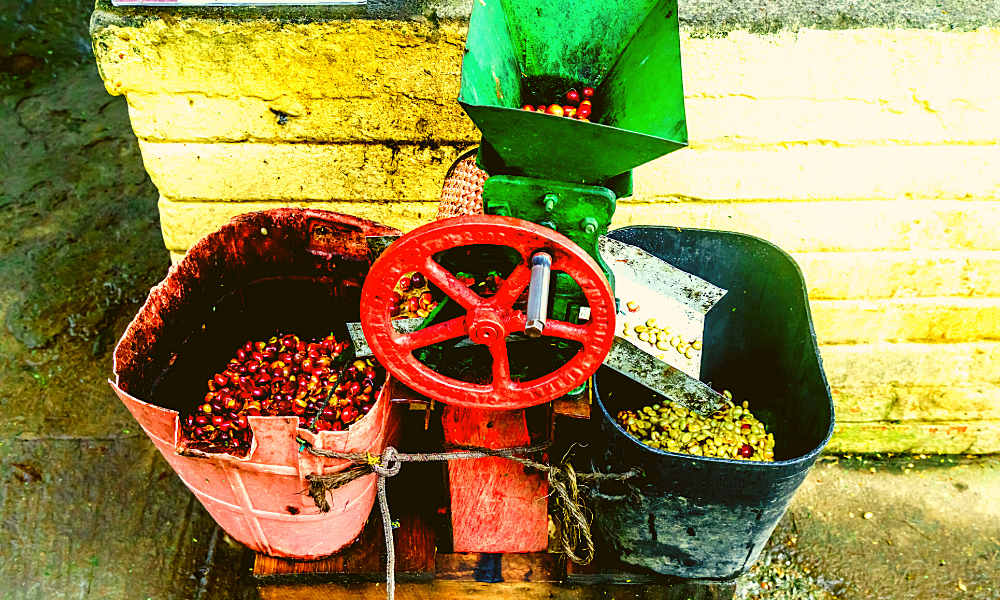
Brewing a Colombian Coffee To Its Best
Now that you have some of the best Colombian coffee, it is important that you know how to brew them the right way. There are a few pieces of advice on how to best brew Colombian coffee, however, it depends on the origin and roast of the coffee beans.
Here are some of the safe brewing options you need to try:
- Aeropress
The balanced flavor and full-bodied smooth mouthfeel of the best Colombian coffee make them well suited to brew, Aeropress style. Colombia’s capital, Bogota, even hosts an annual Aeropress Championship which serves to enhance the brewing culture within the country.
- Espresso
Thanks to its high acidity and the mild flavor, Colombian coffee beans are ideal for espresso brewing. They can be roasted dark and then brewed strong without the risk of being overly bitter.
The high acidity levels also mean that they are suitable for milky espresso drinks like cappuccinos and macchiatos.
Frequently Asked Questions
Q: Is Colombian coffee the best?
A: Yes. Colombian coffee is considered to be the best single-origin coffee in the globe. This is mainly because of the ideal growing conditions, flavor profiles, and the processing methods.
However, you should note that the coffee-producing industry in Colombia is also marketed very well by the FNC, adding a notion to its popularity. It is still up to you whether you can call it the best or not.
Q: Is Colombian Coffee More Acidic?
A: Yes. The good quality Colombian coffee is highly acidic in general. This is mainly because of the growing conditions— lower temperatures and high altitudes.
Coffee that’s grown at cooler temperatures ripens slower and allowing the development of tastier and more complex flavors. So, when brewed, the coffee tends to be more aromatic and acidic than those coffees that are grown in the warmer climates.
Final Thoughts
Colombia and coffee are synonymous, and we hope that this article has provided you some insight into why.
The high-elevation volcanic soils as well as the commitment to growing only the highest quality coffee beans have left this South American country with its well-deserved golden reputation.
So, consider starting your day with a cup of the Colombian joe and let us know what you think by firing up the comment section below!
Disfruta De Tu Café, Amigo!
